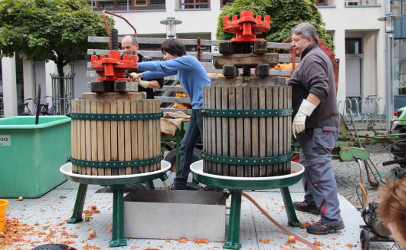Editor’s note: This column was originally posted by the Michigan State University Extension Service.

Fall is here. Leaves are changing colors, the air is getting cooler and the last of the produce season is upon us. One fall produce item we can’t seem to get enough of is apples. In addition to being nutritious on their own, they are great for making apple cider.
Apple cider is simple to make, but there are a few precautions you need to take to make sure it is safe to drink and avoid foodborne illness.
• Never use apples from the ground. Manure from cattle, deer and even some birds can harbor dangerous bacteria like E. coli. Washing the apples may remove some bacteria but not all, so it is best to avoid using apples that may have come in contact with animal waste.
• Use only freshly harvested apples. As apples age they become less acidic, which can allow bacteria to grow. Try to harvest apples and make the cider within 24 hours.
• Always pasteurize your cider. The only way to reduce the potential for foodborne bacteria is to pasteurize the cider. This can be done by bringing the cider just to a boil before consuming.
• Refrigerate after boiling. Cider can be stored up to seven days in the refrigerator. Make sure to use sanitized storage containers.
Remember, you can’t smell, taste or see bacteria. Michigan State University Extension recommends the above tips to keep your family food safe this apple cider season.
(To sign up for a free subscription to Food Safety News, click here.)
